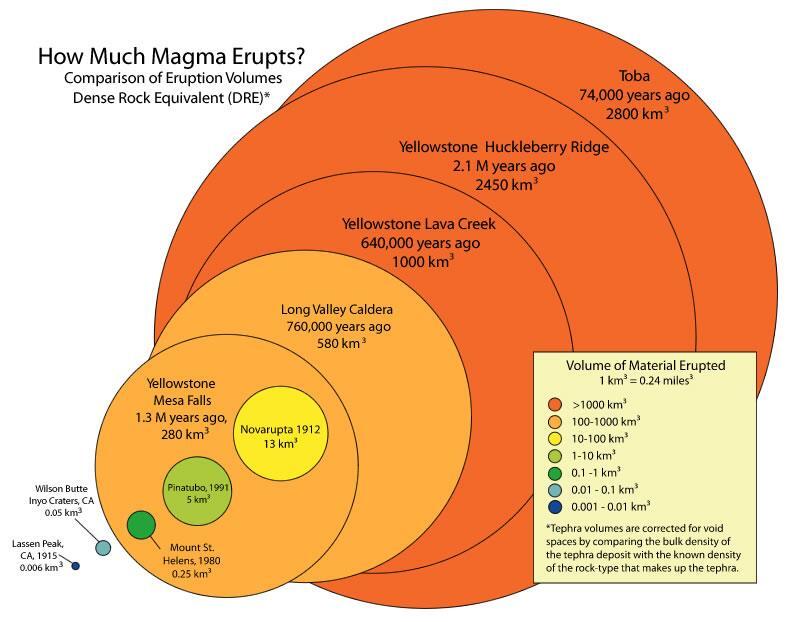What is a supervolcano? What is a supereruption?
The term "supervolcano" implies a volcanic center that has had an eruption of magnitude 8 on the Volcano Explosivity Index (VEI), meaning that at one point in time it erupted more than 1,000 cubic kilometers (240 cubic miles) of material. In the early 2000s, the term “supereruption” began being used as a catchy way to describe VEI 8 eruptions. Explosive events of this size erupt so much magma that a circular-shaped collapse feature, called a caldera, forms above the evacuated magma storage region.
The largest eruption at Yellowstone was 2.1 million years ago and had a volume of 2,450 cubic kilometers. Like many other caldera-forming volcanoes, most of Yellowstone’s many eruptions have been smaller than VEI 8 supereruptions, so it is confusing to categorize Yellowstone as a “supervolcano.”
Other caldera-forming volcanoes that have produced exceedingly large pyroclastic eruptions in the past 2 million years include Long Valley in eastern California, Valles Caldera in New Mexico, Toba in Indonesia, and Taupo in New Zealand. Taupo erupted 22,600 years ago and is the most recent supereruption on Earth (with a volume of about 1,130 cubic kilometers).
Additional volcanoes capable of producing supereruptions include the large caldera volcanoes of Japan, Indonesia, and South America.
Learn more:
- Caldera systems--a worldwide family that is more than just Yellowstone!
- A personal commentary: Why I dislike the tern "supervolcano" (and what we should be saying instead)




